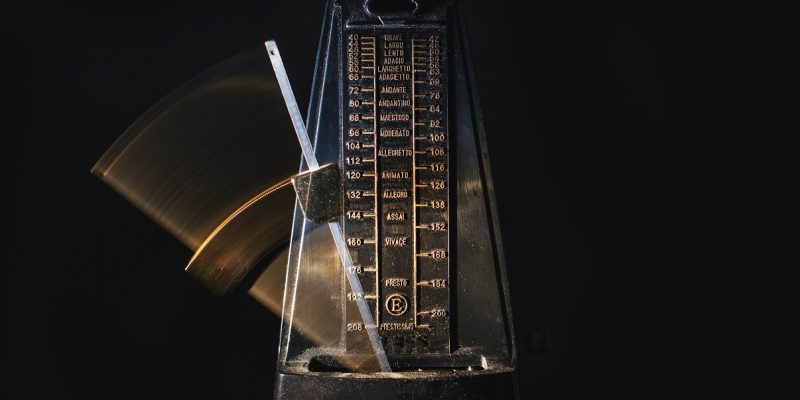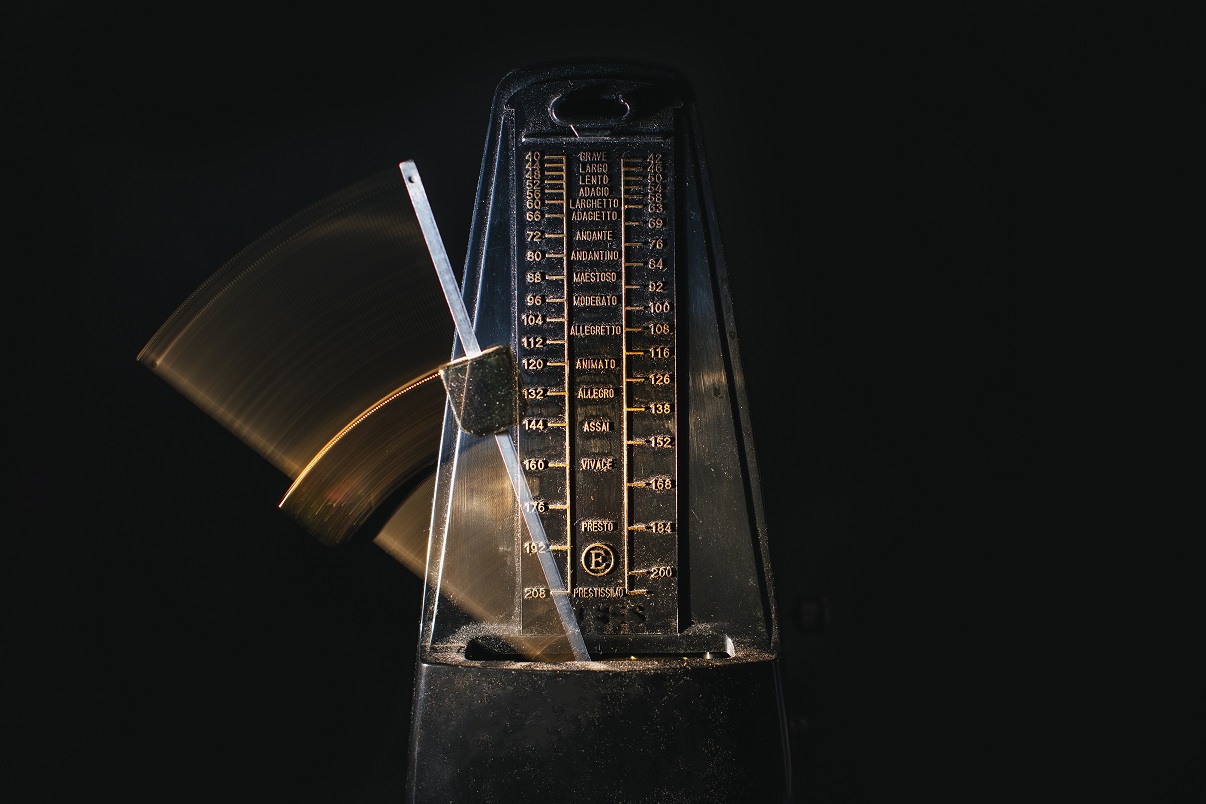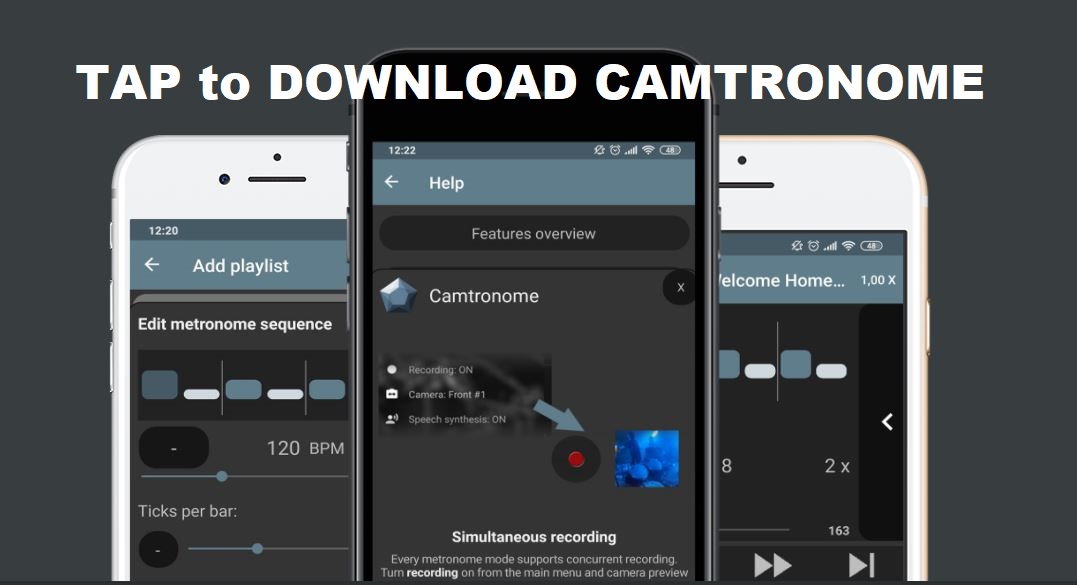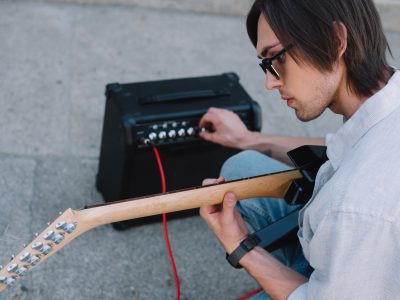
Whether you’re a beginner or a seasoned pro, one skill separates good musicians from great ones: timing. Playing in time isn’t just about rhythm—it’s about groove, precision, and ultimately sounding professional. The good news? You can train this skill. And with the right tools, it doesn’t have to be boring.
In this post, you’ll learn 7 proven practice hacks to improve your timing, plus how Camtronome, a visual metronome app that uses your device’s camera, can transform your timing routine—without boring clicks in your ears.
Why timing is the core of great musicianship
Timing is everything—literally. Whether you’re jamming with a band, recording in a studio, or performing solo, rhythmic accuracy keeps the music alive and tight.
Most mistakes musicians make—rushing, dragging, or losing the beat—come down to inconsistent timing. Yet many ignore this and focus only on notes or technique. In reality, even the most complex lick means little if it’s not in time.
The good news? Timing can be practiced and mastered—if you’re intentional and consistent.

Your practice partner: Camtronome
Camtronome isn’t just a metronome. It’s an intelligent rhythm trainer that uses your camera and device sensors to give real-time visual feedback on your timing.
Features include:
- Visual pulse display
- Video recording – check your timing accuracy
- Support for multiple time signatures & subdivisions
- Tempo automation (slow up gradually)
- Practice session history for progress tracking
- Perfect for drummers, guitarists, pianists, and vocalists…and more!
No need for audio beeps only—you can now see the beat.
1. Start with Subdivisions
Most timing issues come from not feeling the inner pulse. A solid groove depends on mastering rhythmic subdivisions, not just the downbeat.
Practice Tips:
- Start by clapping or tapping quarter notes, then switch to eighths and sixteenths.
- Play scales or chord progressions while counting subdivisions out loud.
- Use a mirror to monitor your physical alignment with the beat.
With Camtronome:
Use the visual pulse feature and slow the tempo to focus deeply. Camtronome lets you see the pulse as you play—so even complex rhythms feel manageable.
2. Record yourself practicing with Camtronome
Watching yourself can be confronting—but it’s also the fastest way to improve.
Practice Tips:
- Record your hands or full-body as you play to see timing drifts.
- Focus on note attacks lining up with the pulse—not just “close enough.”
With Camtronome:
Camtronome records using your camera, thus you can track your rhythmic movement. You’ll spot if your hits or strums are late or early—visually, not just by ear.
Try the “Gap Click” method
The gap click is a powerful trick: silence parts of the metronome and test your internal sense of time.
Practice Tips:
- Try 2 bars click / 2 bars silence. Then expand: 1 bar click / 4 bars silence.
- Try walking or clapping during the silent phase to keep your groove alive.
With Camtronome:
Build custom patterns with silenced bars and watch how you visually realign when the click returns. A brilliant exercise to test and sharpen your inner clock.
Use a visual beat instead of audio
Many musicians drown out traditional metronomes—especially drummers and amplified guitarists.
Practice Tips:
- Replace click-only practice with visual cues (like bouncing balls, blinking lights).
- Use visual aids in band rehearsals to stay locked in together.
With Camtronome:
Use visual-only mode with clear, eye-level placement. It’s perfect for loud rooms or gigs where clicks aren’t practical. Your timing stays tight without sound clutter.
Slow it way down (then speed up gradually)
Practicing too fast builds bad habits. Practicing slow builds control, accuracy, and confidence.
Practice Tips:
- Play at 50–60 BPM and force yourself to hit beats dead on.
- Use this time to isolate where you tend to rush or drag.
- After each successful round, raise tempo by 5 BPM.
With Camtronome:
Use tempo automation to gradually increase speed only once you’re stable at the current pace. This keeps you from jumping ahead too early.
Create a “timing warm-up” routine
Want to get better? Make timing a habit. Even 10 focused minutes a day can yield big results.
Practice Tips:
- Do timing warm-ups before every rehearsal, gig, or session.
- Vary the routine weekly: scales, rudiments, groove skeletons.
With Camtronome:
Create and save custom warm-up sequences inside the app. Each session gets logged—so you’ll literally watch your groove improve over time.
Explore odd time signatures
Many musicians stick to 4/4. But pro players train to feel 3/4, 5/4, 7/8, 6/8, and polyrhythms naturally.
Practice Tips:
- Set Camtronome to 5/4 and jam freely—try groove cycles of 3+2 or 2+3.
- Layer polyrhythms (e.g. triplets over 4/4) using visual cues.
With Camtronome:
Switch instantly between standard and odd meters. It’s the quickest way to build rhythmic vocabulary beyond basic beats.

FAQ: musicians ask…
Q: Should I always use a metronome when practicing?
A: Not always—but consistently. Use it for building timing control, then test your groove by turning it off. Camtronome helps balance both modes.
Q: What if I play ahead or behind the beat on purpose?
A: That’s fine—but you need to first control time before you stretch it. Camtronome lets you visualize your intention and execution.
Q: How is Camtronome different from a regular metronome?
A: Camtronome gives visual and movement-based feedback, not just audio clicks. It’s interactive, adaptive, and works across instruments.

Final thoughts: groove is trainable
Timing isn’t just a skill—it’s a musical superpower. Great timing means your solos land, your band stays tight, and your music connects deeper.
And now you don’t need just a beeping box to train it.
Camtronome helps you see, feel, and improve your timing with real-time feedback.
Download Camtronome now for iOS or Android and take your rhythm from guesswork to greatness.











